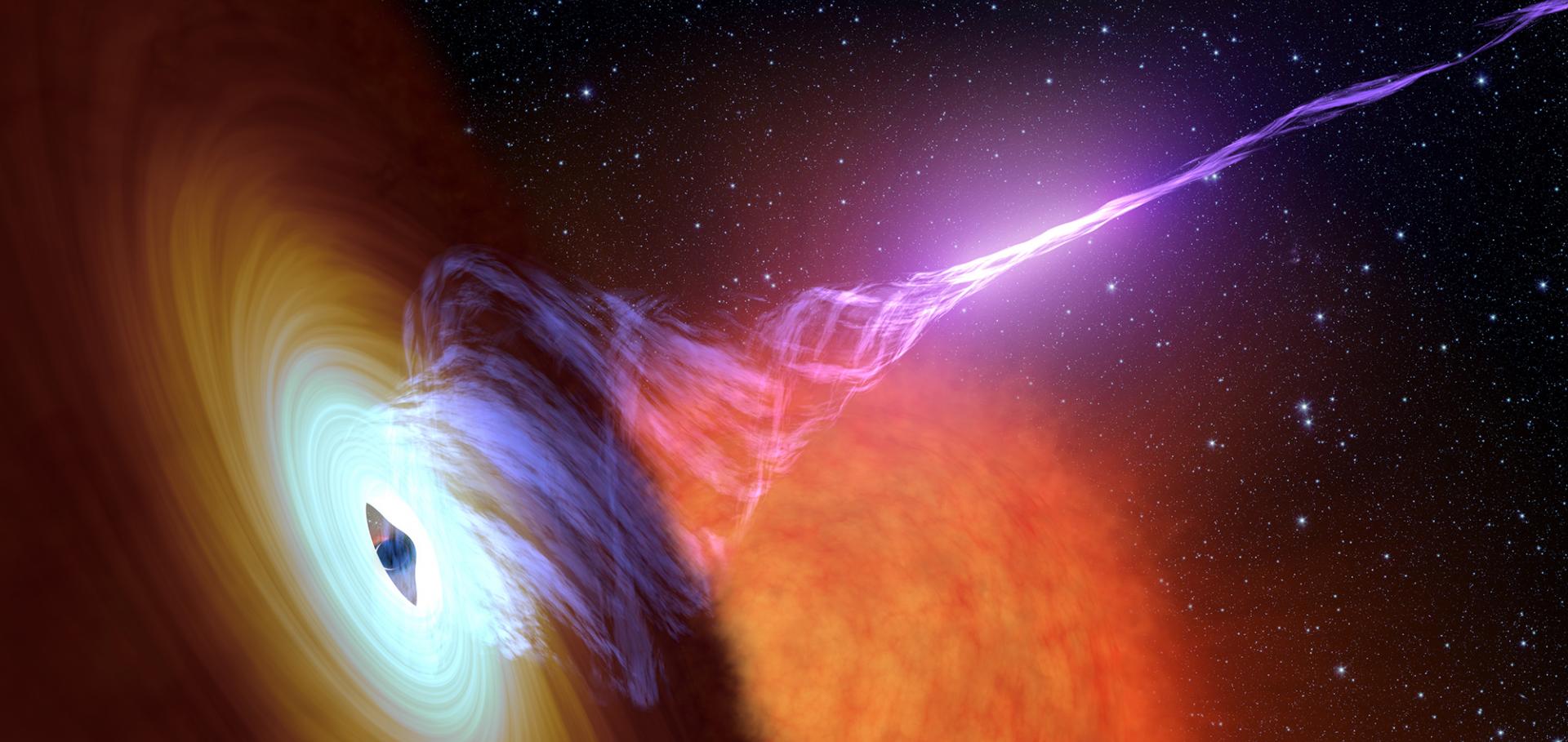Searching for the signatures of jet-ISM interactions in X-ray binaries
(2008)
Broadband X-ray Spectra of GX 339-4 and the Geometry of Accreting Black Holes in the Hard State
(2008)
A decade of radio imaging the relativistic outflow in the peculiar X-ray binary Circinus X-1
Monthly Notices of the Royal Astronomical Society 390:1 (2008) 447-464
Abstract:
We present observations of the neutron star X-ray binary and relativistic jet source Circinus X-1 made at 4.8 and 8.6 GHz with the Australia Telescope Compact Array during a time interval of almost 10 yr. The system shows significant variations in the morphology and brightness of the radio features on all time-scales from days to years. Using the time delay between the successive brightening of the different components of the radio emission we were able to provide further evidence for the relativistic nature of the arcsec-scale outflow, with an apparent velocity βapp ≥ 12. No compelling evidence for an evolution of the orientation of the jet axis was found. We also place an upper limit on the proper motion of the system which is consistent with previous optical studies. Besides the previously reported radio flares close to the orbital phase 0.0 (interpreted as enhanced accretion at periastron passage), we identified outbursts with similar properties near the orbital phase 0.5. The global spectral index revealed a preferentially steep spectrum over the entire period of monitoring with a mean value and standard deviation α = -0.9 ± 0.6(Fν ∝ να), which became significantly flatter during the outbursts. Polarization was detected in one third of the epochs, and in one case Faraday rotation close to the core of the system was measured. © 2008 RAS.A global study of X-ray binaries
International Conference Recent Advances in Natural Language Processing, RANLP (2008)
Abstract:
We present preliminary results on a global study of X-ray binaries using 14 Ms of data from the Rossi X-ray Timing Explorer RXTE satellite. Our initial study on GX 339-4 is recapped as an introduction to the methods used. We use a consistent analysis scheme for all objects, with three different spectral models to fit the powerlaw and disc components. We also take into account the possibility of a line being present in the data. The resulting almost 4000 observations allow the tracking of the spectral properties of the binaries as they evolve through an outburst. Our investigations concentrate on the disc and line properties of the binaries when in outburst. We also show the Disc-Fraction Luminosity diagram for the population of X-ray binaries studied which will enable us to further links with AGN. © Copyright owned by the author(s) under the terms of the Creative Commons Attribution-NonCommercial-ShareAlike Licence.Evolution of the disc radii during outburst of x-ray binaries as infered from thermal emission
International Conference Recent Advances in Natural Language Processing, RANLP (2008)


